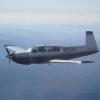-
Posts
1,308 -
Joined
-
Last visited
-
Days Won
3

rbp replied to Tommy's topic in Miscellaneous Aviation Talk

rbp replied to Tommy's topic in Miscellaneous Aviation Talk

rbp replied to Tommy's topic in Miscellaneous Aviation Talk

rbp replied to GeorgePerry's topic in Miscellaneous Aviation Talk

rbp replied to rocketman's topic in Mooney Bravo Owners
We have placed cookies on your device to help make this website better. You can adjust your cookie settings, otherwise we'll assume you're okay to continue.